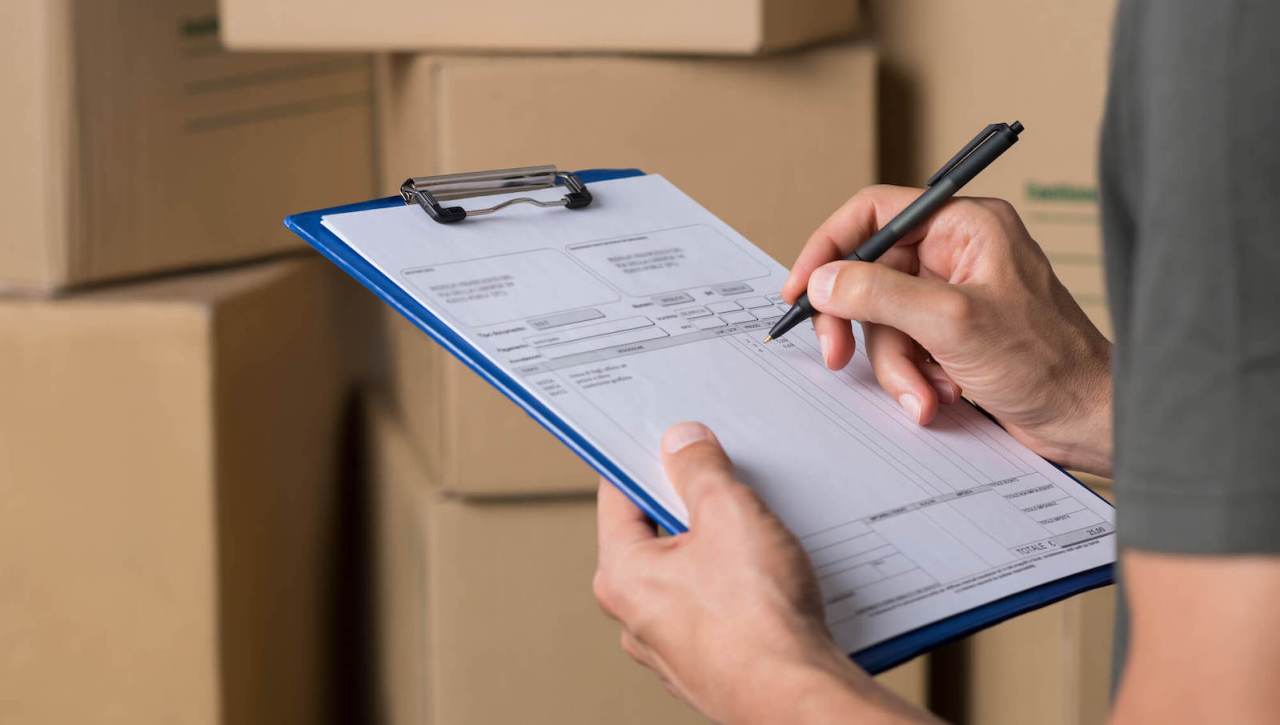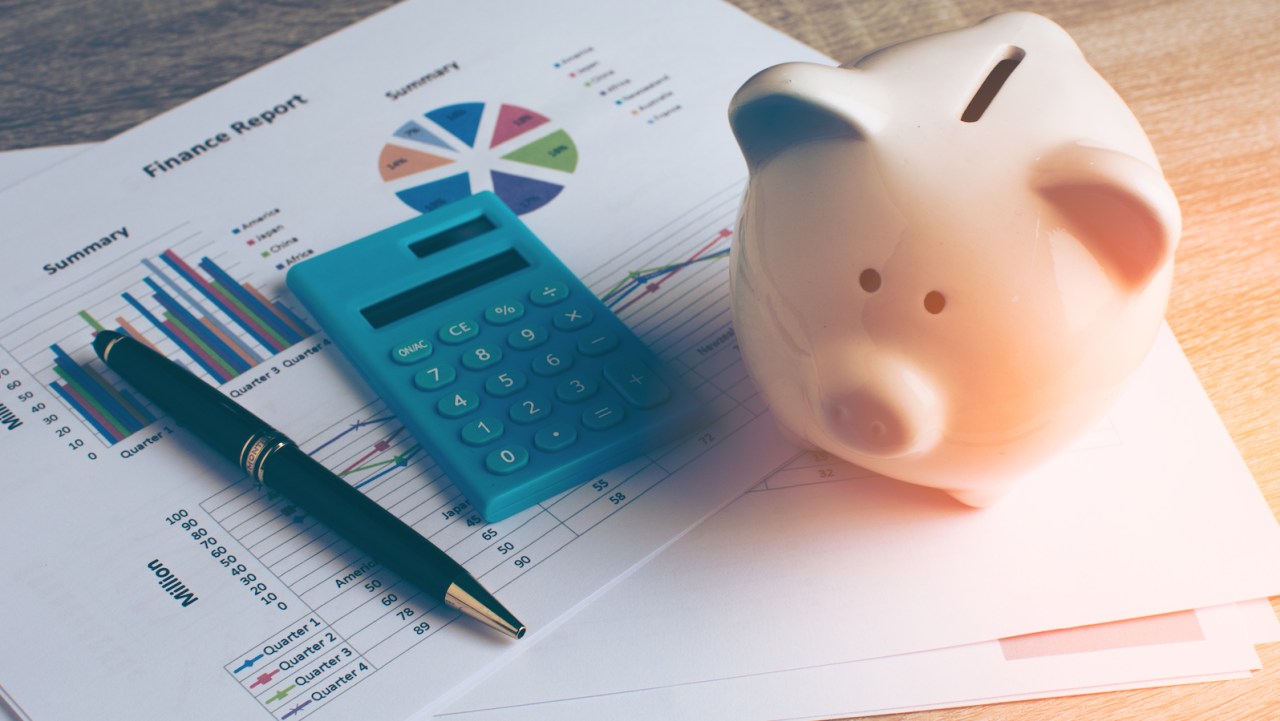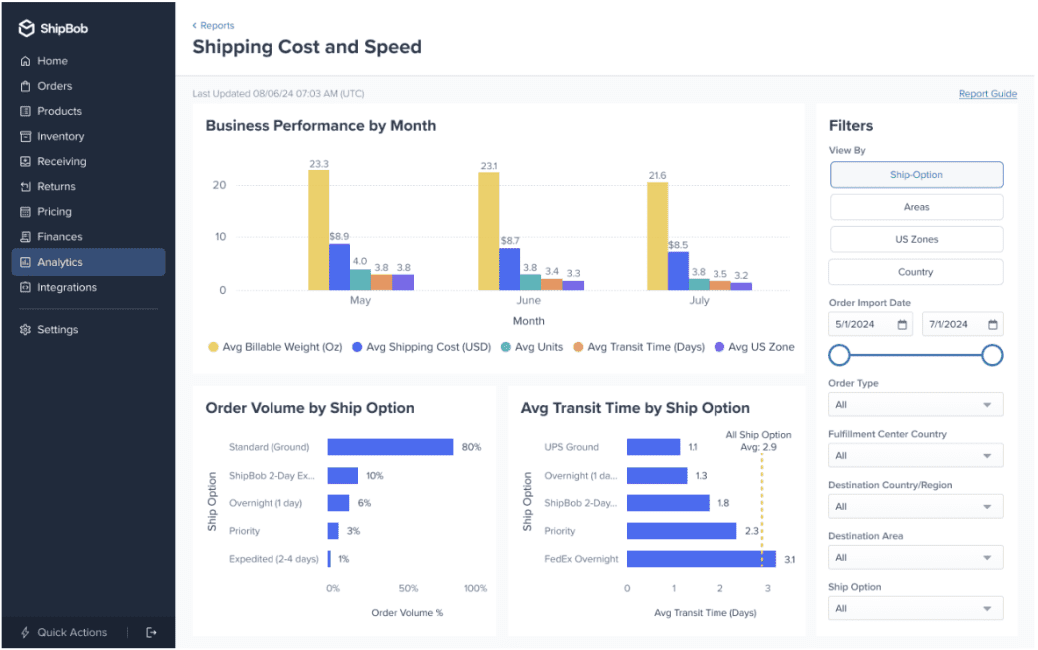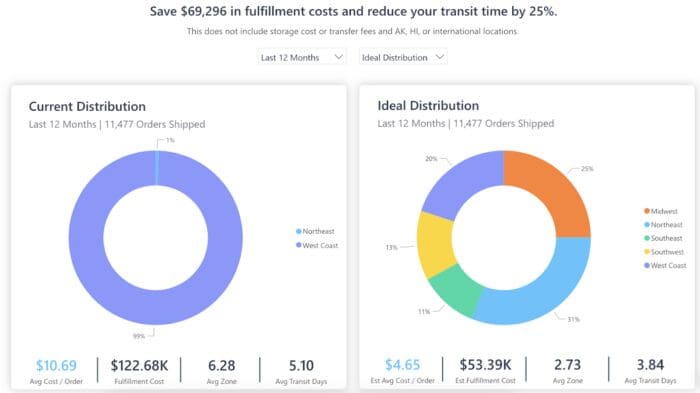As a retailer, so much of your time and energy goes into managing your inventory, streamlining your logistics, building partnerships, and curating the customer experience.
But how do you know if all that hard work is paying off?
To find out, you’ll need to track “key performance indicators,” or KPIs, for your retail business.
By monitoring particular metrics over time across your online sales, in-store sales, and operations, you’ll gain quantitative insights into your business performance.
In turn, these insights give business owners visibility into what’s working, what isn’t, and where there are opportunities to improve efficiency, cost savings, and customer satisfaction.
In this article, we’ll take a closer look at the most important KPIs to track in the retail industry, how to track them, and how to leverage them to benefit your retail business.
What is a retail KPI?
A retail KPI (or key performance indicator) refers to a quantifiable metric used to measure how a retail business is performing.
Why are retail metrics important?
Tracking retail metrics is an absolute necessity for any retailer that wants their business to thrive. Here are just a few of the reasons why retail KPIs are so useful for retailers.

They’re a source of truth
When running a retail business, you can’t always trust your impressions. Assumptions or inferences about how certain elements of your business are performing may not always reflect reality.
Retail KPIs give a business real data on its productivity, efficiency, costs, and more. As long as you’re calculating the KPIs correctly, they provide an accurate, unbiased assessment of what they measure.
“Our fulfilment data feeds into our ERP, but a lot of times, we’ll go to ShipBob’s dashboard because the data is instant and real-time. We know ShipBob’s data is accurate as of this minute, so we can utilise ShipBob’s software as our real-time source of truth.”
Jessica Cedarleaf, VP of Operations at Tonies

They can help you make better business decisions
Having accurate data on retail performance is crucial when it comes time to make big business decisions. Retail metrics provide data that can inform your decision-making, and help improve your overall retail strategy.
For example, say the sales metrics you’re tracking indicate that a certain SKU isn’t selling well. You can use that when it’s time to reorder inventory, and not order as much of that SKU to save warehousing space and reduce inventory holding costs.

They can reveal opportunities for improvement
With so much going on in a retail business, it can sometimes be hard to know what you could be doing better. By tracking retail KPIs over time, you can see which aspects of your business are performing well and which are not, and spend your time and energy on improving the supply chain elements that need it most.
13 essential retail KPIs and metrics to track in 2025
There are many retail KPIs and metrics that retailers can track, but not all will be relevant to your business. To get the best insights, retailers will first need to understand which metrics are relevant to your particular objectives, then narrow the list to focus on the right KPIs.
Here are some of the most common and important metrics to consider, and how retailers use them.
1. Year-over-year growth
Year-over-year sales growth compares the sales revenue made during a given period against the sales revenue made during that same period the previous year, and measures the growth difference.
Year-Over-Year Growth=
[(This year’s sales – Previous year’s sales) / Previous year’s sales] x 100
Example:
If you sold $500,000 worth of products in Q1 of this year and $400,000 worth of products in Q1 of last year, you would calculate year-over-year sales as follows:
Year-over-year sales = [($500,000 – $400,000) / $400,000] x 100
= ($100,000/$400,000) x 100
= 25%
Why it matters:
Normally tracked on a quarterly basis, year-over-year sales helps you understand how your sales grew or declined compared to the previous year. This puts your growth in context, and gives you a fuller picture of your company’s performance.
When you look at this metric alongside any strategic changes you made, you may be able to identify what’s contributing to a decline or growth in your sales. For example, if you added new products to your product mix between last year’s Q1 and this year’s, perhaps that resulted in a significant sales increase.
2. Sales per square foot
Sales per square foot measures how much money in sales you made for each square footage of floor space in your retail store. Keep in mind that only the sales space is taken into account, meaning that fitting rooms, stockrooms, and other non-sales specific retail spaces are not included.
Sales per square foot =
Net sales/Amount of sales space
Example:
If your net sales amounted to $40,000 for a specific period, and you occupy 500 sq. ft of sales space, you would calculate sales per square foot as follows:
Sales per square foot = 40,000/500
= $80
In other words, you’re making $80 in net sales for every square foot of sales space you occupy.
Why it matters:
Mostly used when a retail business has physical stores, this metric lets you measure the efficiency of your store or your store layout. That way, you can essentially get a better sense of how well a certain store is performing, which is particularly important if you’re running a business in multiple locations.
By understanding these numbers, you can decide whether you need to downsize your store or expand it to make even more sales. Alternatively, you may need to consider solutions such as improving the layout of your store, optimising your pricing strategy, finding ways to get people to stay longer, or offering creative promotions.
3. Sales per employee
This metric lets you track the amount of sales compared to the number of staff you have.
Sales per employee =
Net sales/Number of employees
Example:
If you’re making $40,000 in net sales and you employ 10 people, you would calculate sales per employee as follows:
Sales per employee = $40,000/10
= $4,000
Why it matters:
The sales per employee metric can help a retailer make smarter employment decisions, particular those related to payroll budgeting and sales team hiring.
4. Conversion rate
This retail KPI lets you measure the percentage of visitors to your store or website that bought something, or generated revenue.
Conversion rate =
(Number of sales/Number of visitors) x 100
Example:
If you had 5,000 visitors within a given month and 2,000 of those visitors converted (i.e., bought something), you would calculate your conversion rate for that month as follows:
Conversion rate = (2,000/5,000) x 100
= 40%
Why it matters:
Measuring your conversion rate helps you understand how effectively you are encouraging or persuading visitors to actually make a purchase. Traffic alone doesn’t contribute to your revenue, so it’s important to ensure that those visits also produce conversions.
A low conversion rate would suggest you may need to adjust your retail sales process. For example, you may consider revamping your store or website, promoting your products in a more compelling manner, or simplifying the purchase journey.
5. Cost of goods sold (COGS)
Cost of goods sold measures how much it cost you to acquire or produce inventory.
COGS =
Beginning inventory + Inventory purchases – Ending inventory
Example:
A retailer starts the year with $20,000 worth of inventory and makes an additional purchase worth $50,000. The retailer then ends the year with $15,000 worth of inventory. In this case, the cost of goods sold would be calculated as follows:
Cost of goods sold = $20,000 + $50,000 – $15,000
= $55,000
Why it matters:
Measuring your COGS is essential to achieving profitability. If you know how much you spent to acquire or produce your products, you can set prices that are competitive, but that also offset your expenses.
Moreover, this retail KPI plays an important role in your accounting records and for measuring other metrics (such as gross profit).
6. Average order value
Also called the average transaction value, this retail metric measures how much a customer spends in your store on average.
Average order value =
Total revenue/Number of orders or transactions
Example:
If you earned a total of $150,000 in revenue for the year and saw 5,000 transactions in total, you would calculate average order value as follows:
Average order value = $150,000/5,000
= $30
Why it matters:
Whether your average order value (or AOV) is high or low has implications for your pricing, sales, and marketing campaigns and strategies.
If your average order value is high, customers are probably either buying your high-value items or buying lots of items at once. A low average order value would mean the opposite, in which case you would want to experiment with different strategies to raise your AOV.
7. Basket size
The basket size (or number of items) metric measures how many units are sold per transaction on average.
Basket size =
Total number of units sold/Total number of transactions
Example:
If you sell 5,000 units during a particular quarter, and completed a total of 3,000 transactions in that quarter, then you would calculate basket size as follows:
Basket size = 5,000/3,000
= 1.6 items per basket
Why it matters:
A larger basket size indicates that people are buying many items when they place an order with your store. While this may not indicate anything in particular about your business depending on what kind of products you sell, if your basket size is small, you may want to consider upselling, cross-selling, or creative product promotions to encourage larger sales.
8. Gross profit
Gross profit refers to how much revenue your business made overall, minus the cost to make or procure your goods.
Gross profit =
Total revenue – Cost of goods sold
Example:
If your business made $50,000 in total revenue in a year, but your COGS was $16,000 that year, you would calculate gross profit as follows:
Gross profit = $50,000 – $16,000
= $34,000
Why it matters:
Gross profit can be a good indicator of how profitable your retail business actually is, and if you are spending too much on purchasing inventory or manufacturing goods. Once you understand how much gross profit you’ve made, you can consider whether or not your business can afford to make additional investments — or whether you need to cut back on your expenses.
9. Net profit
Net profit refers to the total profit you’ve made, minus all the expenses associated with running your business.
Net profit =
Total revenue – Total expenses
Example:
If your business made $50,000 in total sales revenue in a year, but had $9,000 of expenses in that year, you would calculate net profit as follows:
Net profit = $50,000 – $9,000
= $41,000
Why it matters:
Your net profit helps you understand whether you’re making enough profit to keep your business running. A low net profit, for instance, could indicate a need to reduce your operating expenses.
10. Inventory turnover
Also called stock turn, this metric measures the number of times a retailer sells and replaces inventory during a specific period.
Inventory turnover =
Cost of goods sold/Average inventory cost
Example:
If your business’s COGS for a given period was $40,000, and your average inventory value was $5,000, you would calculate inventory turnover rate as follows:
Inventory turnover rate = $40,000 / $5,000
= 8
Why it matters:
Monitoring your inventory turnover gives you insight into which specific products are in highest demand. With this knowledge, you can better plan your inventory and make sure you maintain optimal inventory levels.
An excessively high inventory turnover could indicate that you’re selling your goods too fast and you’re not stocking up fast enough to meet customer demand. Meanwhile, a very low inventory turnover rate could mean you’re not selling your products fast enough, which could create deadstock or result in inventory obsoletion.
However, balancing your inventory turnover can be difficult — especially when macroeconomic shifts and global events cause demand to shift quickly.
For example, in response to shortages during the supply chain crisis, retailers expecting pandemic demand-levels ordered much larger quantities of inventory than they normally would. But once COVID restrictions and shutdowns began to lift, the surge of demand for that merchandise waned, leaving these retailers with excess merchandise. Many retailers resorted to discounting goods as a way to improve their inventory turnover.
11. Sell-through rate
Sell-through rate measures the number of units sold as a percentage of the total number of units that were available to sell.
Sell-through rate =
(Number of units sold/Starting inventory) x 100
Example:
If you had 600 units of a particular SKU in your starting inventory available to sell, and you sold 400 of those units, you would calculate sell-through rate as follows:
Sell-through rate = (400 / 600) x 100
= .66 x 100
= 66%
Why it matters:
Sell-through rate is a useful metric for evaluating your merchandise performance. You’ll be able to see which SKUs are performing well and which ones aren’t, and use that information to adjust your inventory levels when reordering.
12. Shrinkage
Shrinkage measures how much inventory you’ve lost (not including sales). The inventory loss may be attributed to things like employee theft, supplier fraud, shipping damages, administrative error, or shoplifting.
Shrinkage =
Ending inventory value – Actual inventory value
Example:
If your business ends the quarter with $3,000 worth of inventory left after all sales are complete, but after auditing your inventory you find that you actually have only $2,500 worth of inventory left, you would calculate shrinkage as such:
Shrinkage = $3,000 – $2,500
= $500
Why it matters:
Carefully tracking shrinkage helps prevent your business from losing money. Shrinkage is one of the first indicators of a problem, so monitoring it consistently will enable your business to catch, investigate, and solve discrepancies quickly.
13. Customer retention rate
Your customer retention rate represents how many customers you’re able to retain at the end of a given time period.
Customer retention rate =
[(Number of customers at the end of the period – Number of new customers acquired during the period) / Number of customers at the start of the period] x 100
Example:
If a retailer starts the quarter with 500 customers and ends the period with 450 customers (having lost 50 customers and gained zero new ones), you would calculate customer retention rate as follows:
Customer retention rate = [(4500-0) / 500] x 100
= (450 / 500) x 100
= .9 x 100
= 90%
Why it matters:
Measuring your customer retention rate gives you a clear idea of how well your business is doing in terms of creating a good customer experience. This experience may be related to the quality of customer service you provide or the performance of your product. If you find your customer retention rate low, consider adding extra incentives for customers to stick with your brand — such as discounts or a loyalty program — to build a base of repeat customers.
4 retail KPI examples
Depending on your business’s goals, you may not need to track all of these metrics at the same time. Different metrics provide different insights, so you’ll want to focus on tracking metrics which provide information that’s relevant to your specific objectives.
Here are some of the most common retail business goals, and the metrics best suited to them.

1. Boost sales
If you want to increase your sales, there are several retail KPIs you should focus on. If you see these KPIs increasing over time, that’s a great indication that your sales are also increasing.
- Year-over-year sales
- Conversion rate
- Average order value (AOV)
- Basket size

2. Strengthen the customer experience
While customer experience can be a difficult thing to quantify, these KPIs can give you a sense of how customers are responding to your sales funnel. The following metrics typically indicate a strong customer experience:
- High conversion rate
- High average order value
- Large basket size
- High customer retention rate

3. Reduce stock-outs
Stockouts can often be prevented if you have a good understanding of the demand for your product and inventory movement. Some of the best retail KPIs to track to gather this information include:
- Inventory turnover
- Sell-through rate
- Shrinkage

4. Optimise profits
If a retailer is able to assess their current profit margin, they are in a good position to make the right adjustments to further improve it. Good KPIs to track to know how to increase your profit margins include:
- Cost of goods sold
- Gross profit
- Net profit
ShipBob turns metrics into retail success
ShipBob’s solutions equip your retail business to not only track important KPIs, but also optimise those metrics.
Whether you sell DTC through brick-and-mortar stores or through an ecommerce platform, ShipBob can fulfil all your DTC, retail dropshipping, and retail distribution orders to deliver an omnichannel retail fulfilment strategy.
You can track KPIs for all your retail channels through ShipBob’s dashboard, and gain valuable insights into your inventory, orders, and fulfilment, such as:
- Percentage of on-time orders
- Average fulfilment cost per order
- Average revenue per order
- SKU performance
- Storage cost per unit


ShipBob combines expertise and technology to help you improve these KPIs, saving you time, money, and effort. For example, ShipBob’s Ideal Inventory Distribution tool will calculate the most cost-effective allocation of inventory across our network of dozens of fulfilment centres, so that you can minimise shipping costs and deliver on customer expectations.

“ShipBob’s software helped us better understand where we should grow next. In the beginning, it was difficult to easily calculate how much we were selling in each region. ShipBob’s ideal distribution algorithm enabled us to see not only where our customers were based, but where we should allocate inventory to best meet demand.”
Natalia Lara, CMO of Oxford Healthspan
If you want to learn more about how ShipBob can help your retail business optimise its KPIs and achieve its goals, click the button below.
Retail metric FAQs
Here are answers to some of the most common questions about retail metrics.
What is ATV and UPT in retail?
ATV, or average transaction value, is the average amount of money that customers spend in a single transaction with your business. UPT, or units per transaction, is the average number of items customers purchase in a single transaction.
How can improving retail KPIs enhance customer experience?
Improving retail KPIs helps your business become more efficient, enabling you to lower costs, speed up operations, and ultimately deliver a better experience for customers.
How can improving retail KPIs boost sales performance?
Improving retail KPIs like year-over-year sales, conversion rate, average order value, and basket size will help you make more sales of a higher value over time, boosting sales performance.






